The truth hurts. So does a poor brand architecture.
And nobody feels the pain more than your team and your customers.
Sure, your brand system might have started out tidy. But as you’ve scaled, things unravelled quicker than a cheap jumper in a tumble dryer.
Disjointed logos. Conflicting tones of voice. Unclear propositions.
Internally, teams are confused. Externally, customers can’t connect the dots.
Marketing becomes inefficient. Sales miss opportunities. Decision-making slows to a crawl.
And there’s always that one bright idea:
“Let’s just make a new sub-brand.”
This guide is here to help you fix that.
We’ll cover:
- What brand architecture really means
- The 3 core models (with real-world examples)
- Common pitfalls and how to avoid them
- How to choose the right system for your business
Whether you’re a marketing lead overseeing multiple sub-brands or a growing business wondering how to scale without chaos – this one’s for you.
What is Brand Architecture?
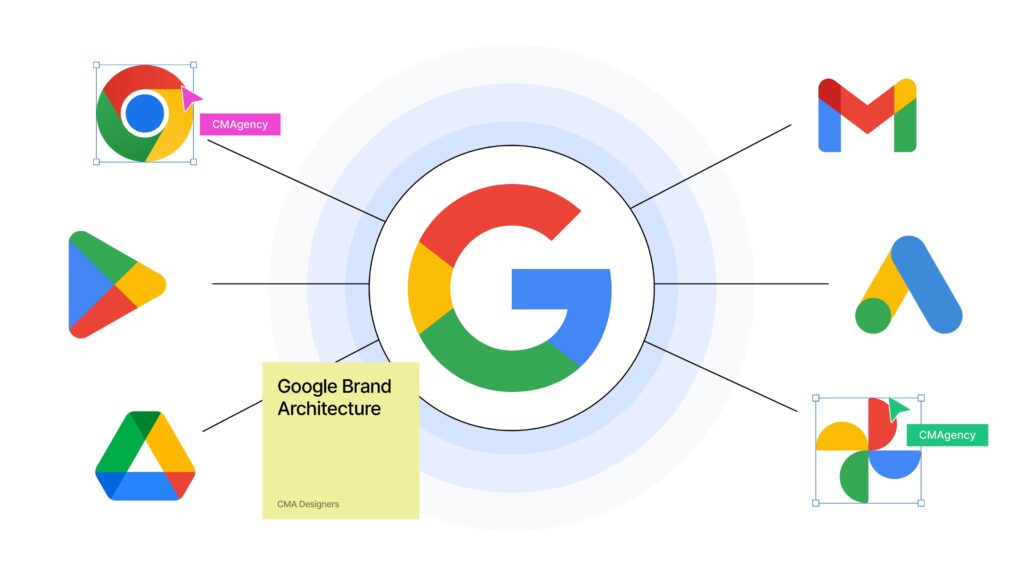
Brand architecture is the structure behind your brand portfolio. It defines how your top level brand or parent company relates to sub-brands, products and services – and how all of it shows up to your audience.
A clear brand architecture makes:
- Your organisation easier to understand
- Your brand more consistent and credible
- Your marketing more efficient and scalable
Nice, right? Sure is. But here’s where most businesses trip up:
Brand architecture isn’t just a design exercise.
It’s not about logos, colours – or naming conventions. It’s about brand strategy.
The value propositions. The relationships between offerings. The clarity of who you are, what you do and how it all fits together.
It’s the backbone of a brand system built to scale. Get it right and everything flows from product launches to internal alignment. Get it wrong and it’s like trying to eat spaghetti bolognese in a bouncy castle – you’ll get in a mess.
What happens without a brand system?
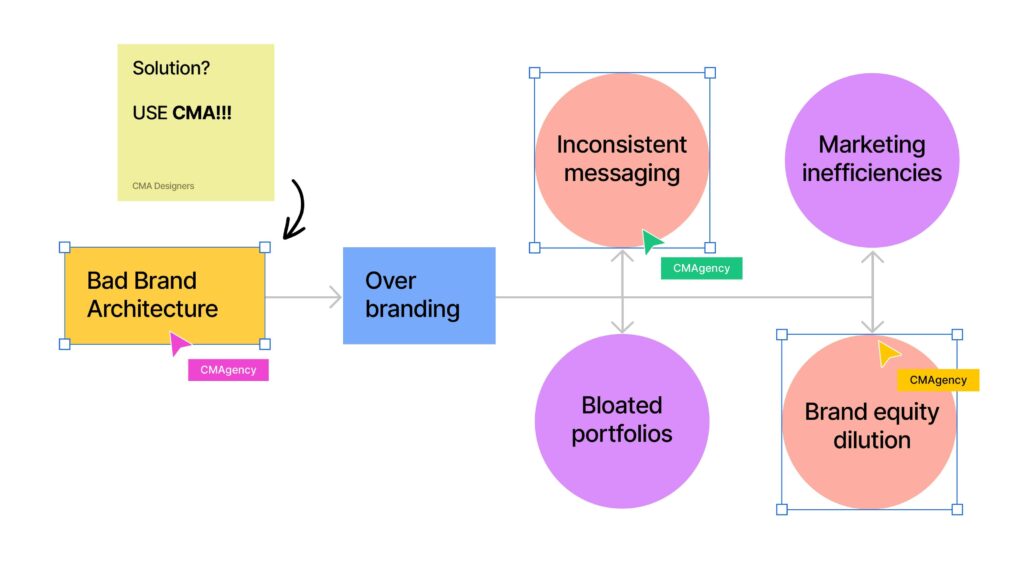
When brand architecture is missing or muddled, you get:
- Over-branding: Every product gets its own identity. No synergy, no cohesion.
- Inconsistent messaging: Teams use different language, visuals and value props.
- Bloated portfolios: Brands launch without logic or lifecycle management.
- Marketing inefficiencies: Duplication of work, confused audiences, low ROI.
- Brand equity dilution: Your strongest asset – recognition – gets split across too many fronts.
The fix? A system that gives every brand its role, every product its place and your audience a clear way to navigate what you offer.
The 3 core Brand Architecture models
(with real examples)
Let’s break down the three most common systems:
1. Branded House
Definition: One master brand drives all sub-brands.
Pros:
- Simpler to manage
- Brand equity compounds
- Clear for audiences
Cons:
- One mistake affects everything
- Less flexibility for new directions
Example: FedEx, Google
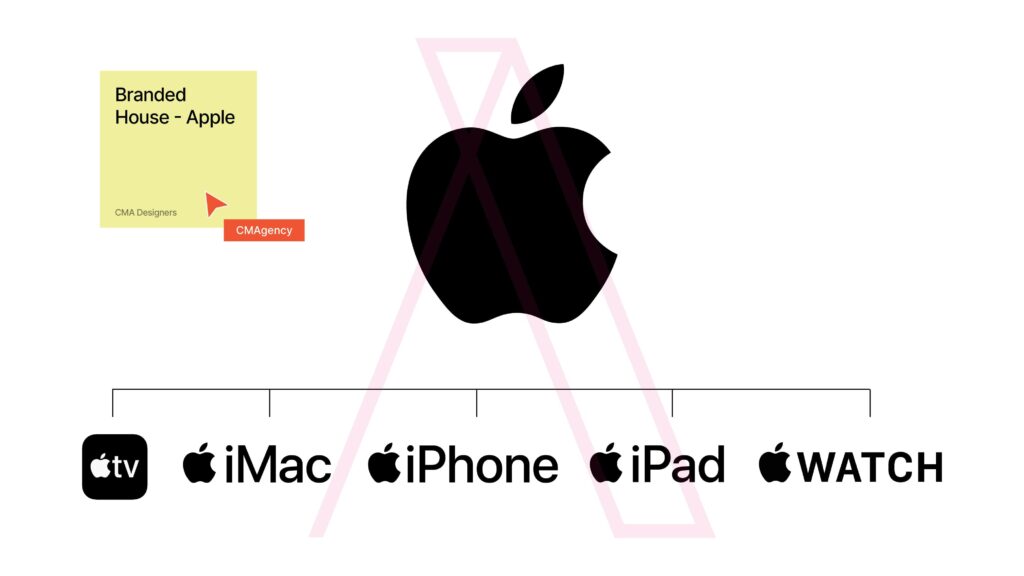
2. Endorsed Brand
Definition: Sub-brands have their own identities, but are visibly “endorsed” by the parent.
Pros:
- Sub-brands can flex
- Still benefit from corporate trust
Cons:
- Requires balance between freedom and alignment
- Design governance is key
Example: Virgin, Nestlé
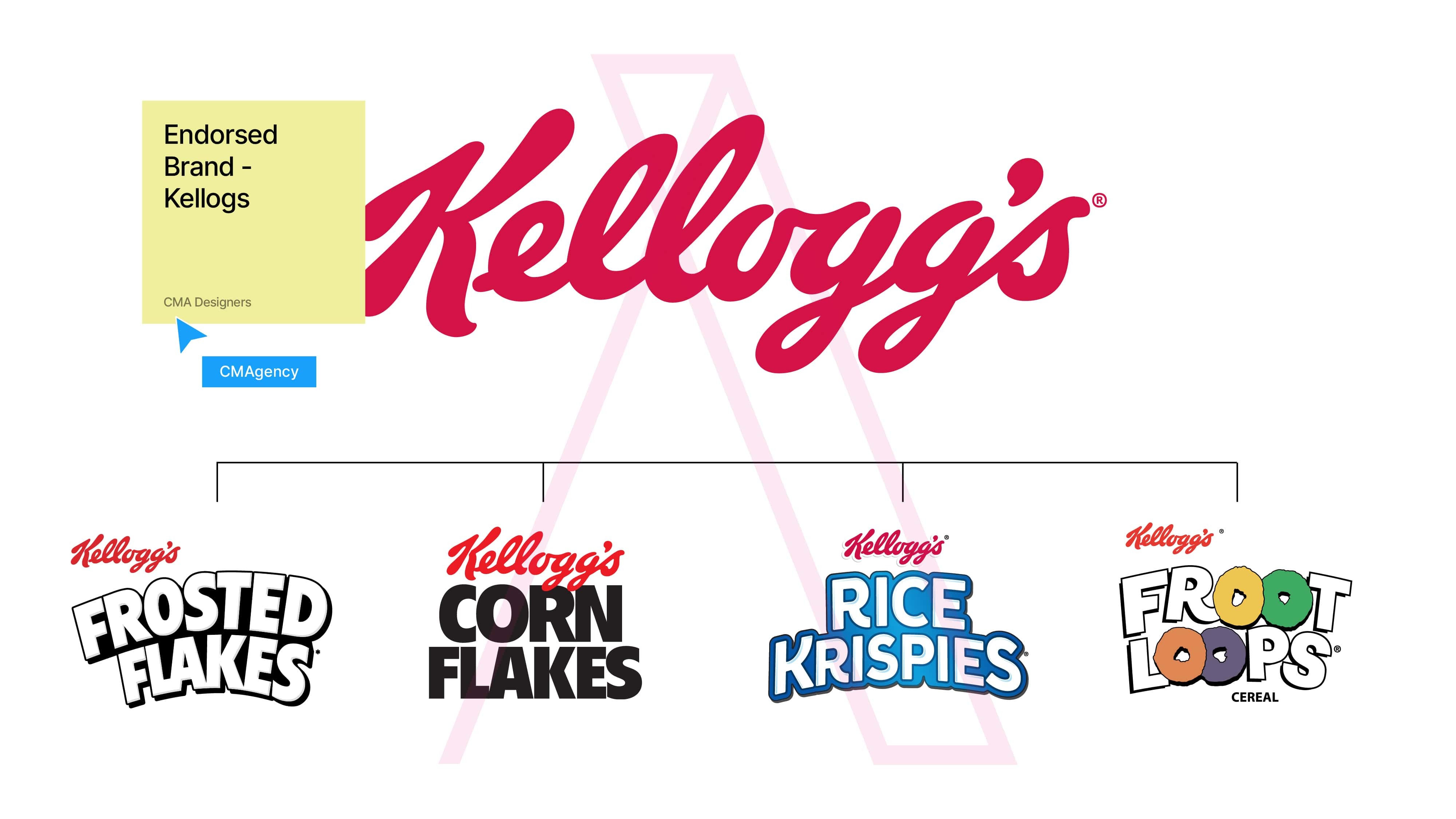
3. House of Brands
Definition: The parent brand stays behind the scenes. Each brand stands alone.
Pros:
- Perfect for diverse or acquired brands
- Audience targeting can be highly specific
Cons:
- Expensive to maintain
- No shared brand equity
Example: Procter & Gamble (P&G), Unilever
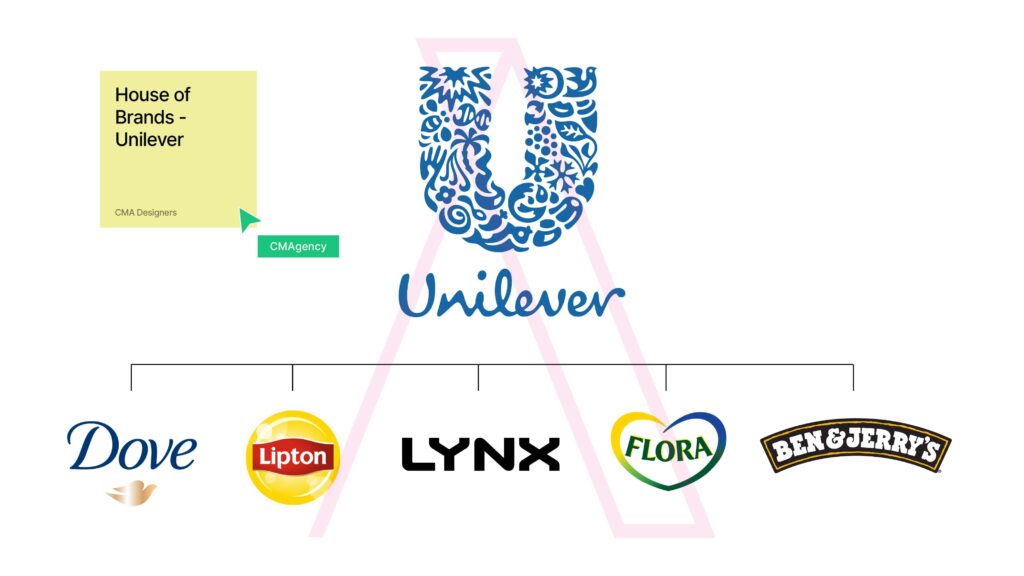
How to choose the right
Brand Architecture system
Ask yourself:
- Do your audiences overlap?
- Do you want customers to know they’re buying from the same parent?
- Are you planning M&A activity?
- Do your products compete with each other?
Then align your answers with your:
- Organisational structure
- Brand strategy
- Budget and resource availability
Need help?
We’ve helped brands navigate this exact question.
See our brand strategy work with Detectamet →

Common mistakes in brand architecture
- Designing without strategy: Logos don’t make a system. Strategy does.
- Inconsistent naming conventions: Confuses audiences and undermines equity.
- Creating sub-brands that compete: Cannibalises your own market.
- Underestimating internal complexity: Sales, ops, and marketing all feel the chaos.
- Neglecting governance: The best brand systems have rules. Not restrictions – guardrails.
A smart system improves ROI, builds trust and simplifies everything from campaigns to board decks.
Ready to fix your Brand Architecture?
We design brand systems that scale. With visual consistency, strategic clarity and a whole lot of common sense.
Fill in the form below to schedule your FREE consultation – you can, and will, thank us later.


